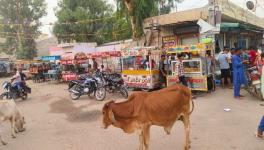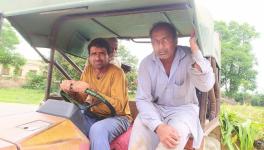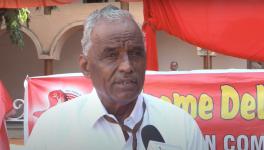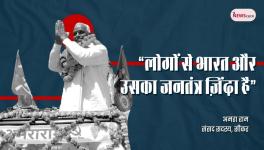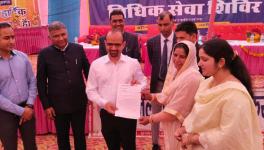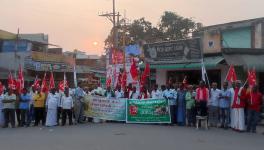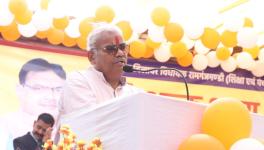Spirit of Unity: Untold Stories of the Inspiring Farmers' Struggle in Sikar, Rajasthan
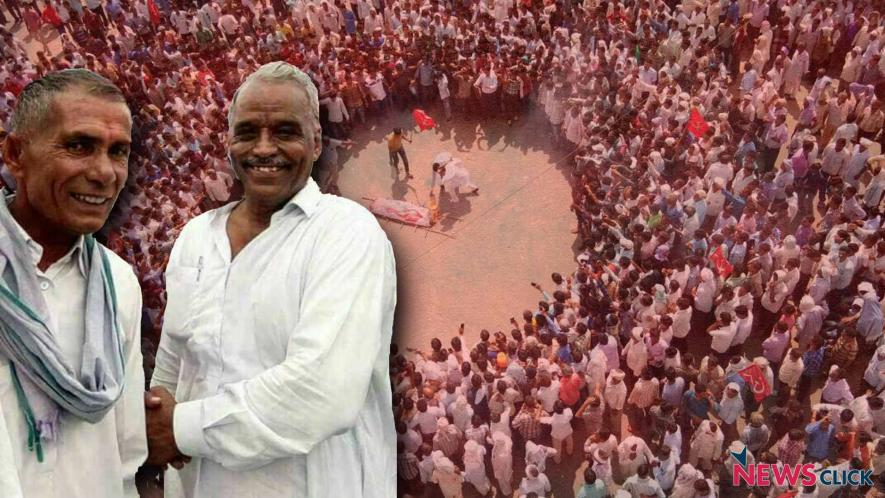
Newsclick Image by Trina Shankar
The farmers' struggle led by the All India Kisan Sabha in Sikar, Rajasthan reached its successful culmination two months after the struggle began in mid-July. While it started with a handful of Kisan Sabha leaders and activists in Sikar, it spread fairly quickly, like unstoppable wild fire.
One must not forget the achievements and the success of the agitation. It wasn't easy, after all. The movement and its victorious outcome were hard-fought. With the UP government giving even one rupee loan waivers, the BJP is clearly not in the mood to make it easy for the farmers. The farmers from Sikar can tell you where the government has been shelling out the money. How the corporates have it easy, while they have to leave their work and families for 14 days to get some attention from the government.
We reached Sikar on the night of 10 September 2017. The plan was to cover the gherao of the Collectorate the next day, and come back. Monday, 11 September saw a huge mobilisation at the Krishi mandi, the nerve centre of the agitation. The people were supposed to leave from the Krishi mandi to the Collectorate for the gherao, but they could do so only much later than planned, due to the continuous inflow of crowds.
We went around looking for a good point to cover the procession to the Collectorate. But barely a hundred metres from the mandi, we encountered a police barricade. A handful of police-men and police-women, a few water cannons and barricades. To my mind, a confrontation was inevitable, with the sheer number of people inside the mandi, and this tiny number of police.
We were told to go to any terrace nearby to find a spot to see the procession and capture visuals. This was the first shock in a series of shocks that followed. Go to any terrace? Buildings, houses by the roads. How can one knock and enter some random house? Leaving doubts behind, we marched to spot a friendly house. And we found to our delight that there was no dearth of friendly houses! In fact in every building, in every house, in every balcony and terrace, there were people who were happy to let us in. They let us use their washrooms if needed. They gave us drinking water and warm smiles, but they were in a hurry to get back to their spots from which they could see the farmers marching. The extent of support and love they had for the movement was not something one expected. They chatted excitedly about whether the barricades would be broken or not.
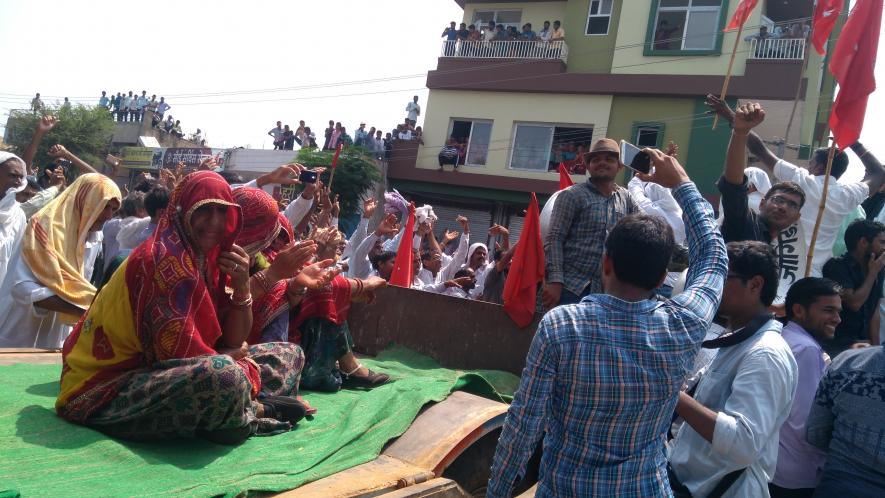
Finally, the farmers left the Krishi mandi and marched, in the exact order that Amra Ram had earlier announced – some tractors in front with Kisan Sabha leaders in them, followed by Kisan Sabha activists and farmers, and the youth would be at the end.
The excitement among the people thronging the balconies was palpable. It was almost difficult to hold on to your viewing space. (If you turn to take the water bottle handled to you, you would most likely lose your spot).

The procession reached the barricade and stopped at a single call from Amra Ram, the leader of the agitation and President of the All India Kisan Sabha. “We would stop here”, he announced through his mic. He said that he wanted the peaceful character of the protest to continue, and that no farmer should be harmed. He also added, to great applause from both sides of the barricade, that the police personnel were sons and daughters of farmers and they too should not be harmed.
He instantly chalked out a plan to extend the farmers' stay on the roads - they would now not only occupy the Krishi mandi, but would also start living on the roads. The women had already been barricading the roads. The rest of them would shut down the city indefinitely till the Vasundhara Raje government agreed to negotiate. “Our plan was to go and shut down the Collectorate. We will shut down the Collectorate and bring it to us”, he declared.
More speeches followed and the meeting continued. Eventually we got down from the terrace and were able to freely walk to either side of the barricade. We began talking to the people. Most of them were either more interested in listening to their beloved leaders, or else dance to the DJs when the speeches ended. The DJ would play only the songs about the Kisan Sabha, leaders of the Kisan Sabha or the farmers' movement. (These songs are so popular today that they are played during weddings!)
We had been asking the young activists helping us, to take us to the women who had been blocking the roads. I kept asking if we would really find some women, because there were already so many women in the procession, and it appeared improbable that there would be more women guarding the checkpoints. Finally, we left the protest site to meet the women. Fiery, determined and resolute women, in hundreds, wearing red Ghoonghats, at all the junctions we could reach. We actually could not cross all the barriers. (They would not let us, and it was better not to mess with them).
We talked to as many women as we could. All of them were not only aware of the demands, but also aware of the details of the Swaminathan Commission recommendations. Honestly I was surprised, and pleasantly so. I had expected them to know about the Swaminathan Commission recommendations, but not in so much detail.
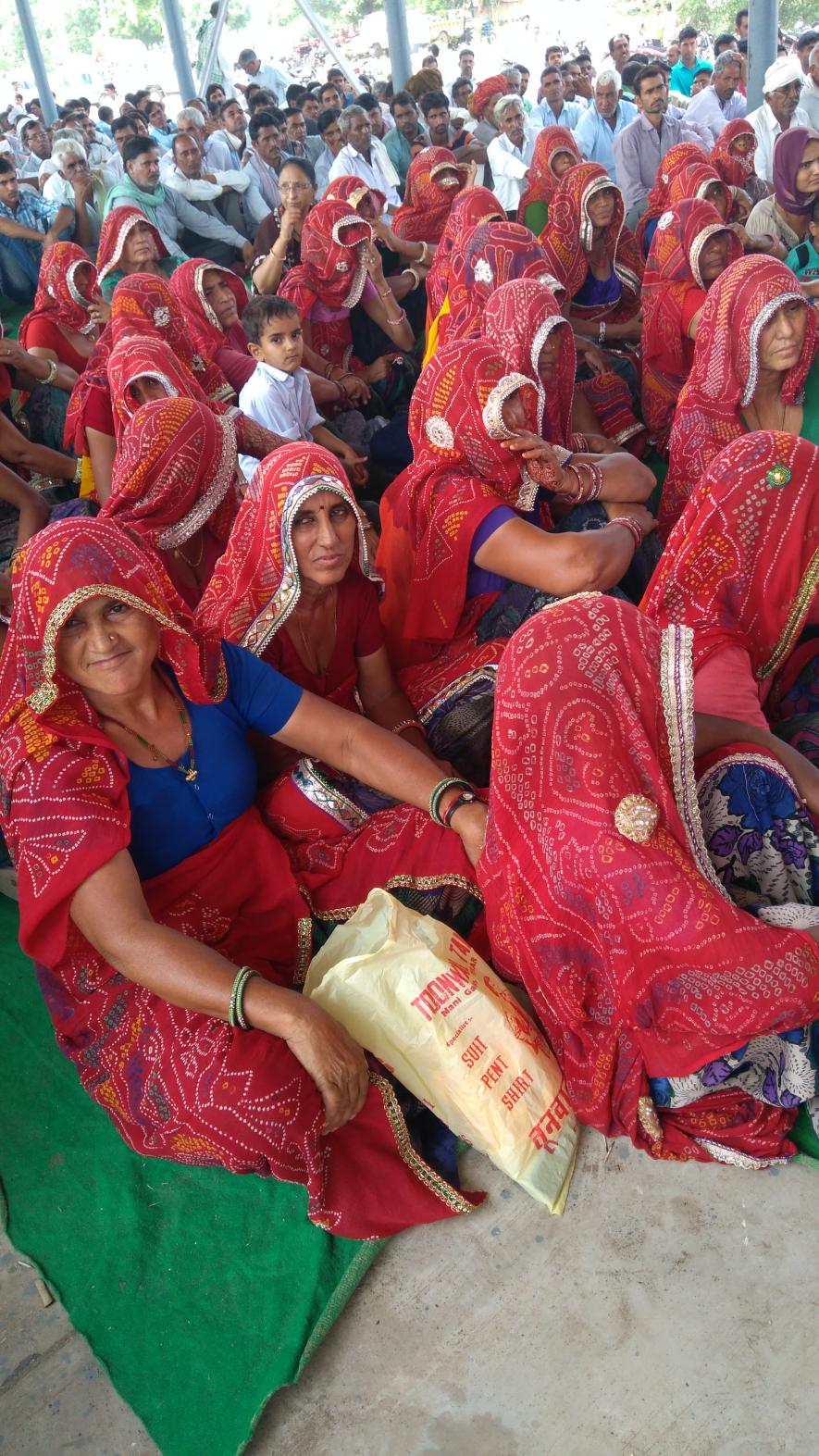
After such revelations and learning new things the whole day, we headed back to the protest site at the Krishi mandi. We had been told that cultural programmes are usually held in the evening. We reached the mandi, tired and not expecting any more surprises. The cultural programmes had already started on the roads. Near the barricade, they had set up a temporary stage with loudspeakers and microphones. It was dark, but there were thousands of people on the road. The songs performed with harmonium were unlike the other “cultural programmes” one usually attends. They were in fact songs of protests, set to the tunes of old Hindi numbers. Songs about fighting caste atrocities to farmer rights, from working class movements to gender justice, from fight against communal politics to fighting corporate loot, you name it!
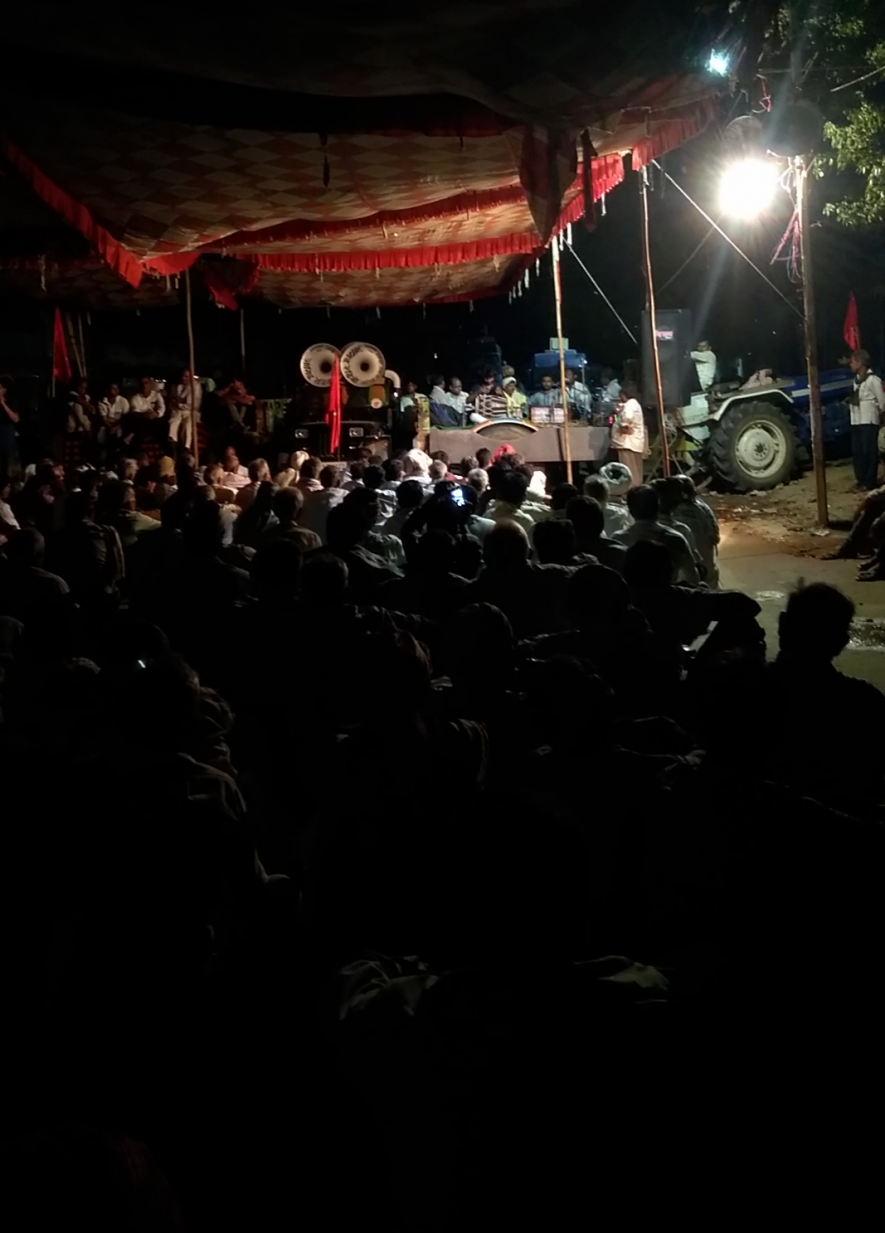
We had by now realised that we won’t be able to leave the city anytime soon, so we got talking to the protesters and activists to get a sense of the chronology of this fascinating movement. The celebration that this movement was. The remarkable love and support it earned from all quarters of the society. The local media even called it “sadak par satyagrah”, due to its absolutely peaceful character.
Amra Ram, Pema Ram and other Kisan Sabha leaders were away in Jaipur for almost two days for negotiations with the government. The people, meanwhile, stood their ground peacefully and with a lot of faith. Everyone I asked about their prediction of the final outcome, had hope in their voices. They had enormous faith in their movement and their leaders.
The leaders had lived with the other protesters day and night, eating with them, being a part of their struggles and lives. Everyone had a personal story about them, of how well they knew them. It is quite difficult to bring out in words, the love that people had for the Kisan Sabha and its leaders.
There are plenty of moments one would take back from the four days spent in Sikar. An old farmer at a blockade site greeting us with “ram ram… lal salaam”, as his words transitioned from a casual greeting to a salute infused with the spirit of the movement. Red flags flying high on every tractor and tempo. From the DJs playing catchy tunes of “Sikar me kisan neta sabha kare” to red flags on top of tiny huts in remote villages. From thousands of red ghoonghat-clad women to the unbelievable discipline of the movement. We were shown photos of the humble abode of Pema Ram, and it was difficult to miss the sheer number of people taking selfies with Amra Ram.
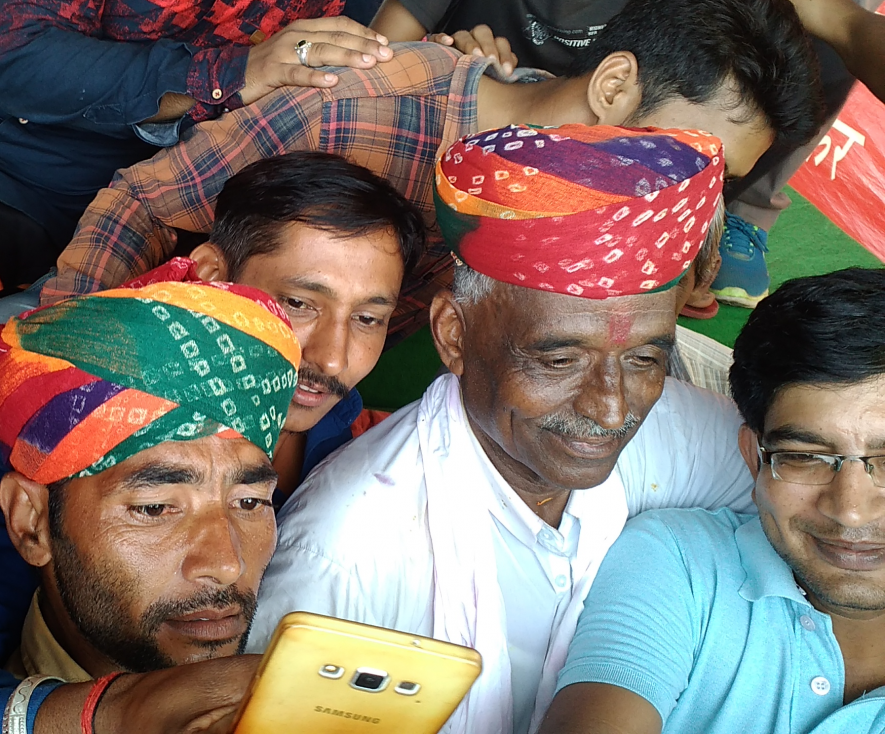
The latest update from Sikar is that the leaders have been visiting all towns and villages to meet and greet the people. Today, 21 September, they are visiting Losal town in Sikar. I have been told that the enthusiasm of the people to welcome their leaders is beyond words.
It is important to remember and recall the movement time and again, and to replicate their struggle elsewhere.
Disclaimer: The views expressed here are the author's personal views, and do not necessarily represent the views of Newsclick.
Get the latest reports & analysis with people's perspective on Protests, movements & deep analytical videos, discussions of the current affairs in your Telegram app. Subscribe to NewsClick's Telegram channel & get Real-Time updates on stories, as they get published on our website.










